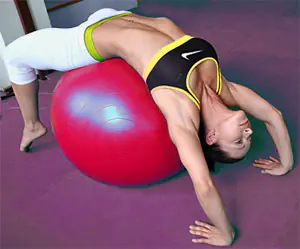In women's fitness, exercises with fitballs are very popular. If you have a strong desire to master this area of physical exercise, then the first step is to purchase equipment, and the second is to put it in “combat mode,” that is, pump it with air to the required state.

So, how to pump up a fitball? If your lungs and diaphragm are well developed, it is possible to inflate a fitness ball with your mouth, which will serve as additional training for the respiratory system.
If your lungs are far from ideal conditions or the ball is too large, you can use the pump that is sometimes included in the kit, or any other available pump (for example, a bicycle pump or from an air mattress) with a suitable nozzle, which is also sometimes included in the kit, or, if not , - sold for pennies in any sports store...
It is recommended to pump up the fitball in two stages:
- Inflate to a size slightly larger than given in the instructions. However, you should not wait until the size of the ball exceeds a critical value and the projectile bursts; five centimeters exceeding the norm is enough.
- Deflate the ball to the normal size.

This sequence of actions will make it easier and faster to achieve the desired result than inflating and deflating the balloon several times.
If the above options do not suit you, you can contact your nearest tire service. This procedure does not require any effort on your part and is carried out quickly and efficiently.
As soon as you have inflated the fitball, take the time to check the quality of inflation by pressing the ball with your palm. If the fitness ball is inflated correctly, the surface will bend a few centimeters, and after the impact disappears it will return to its original position. In addition to this condition, the gymnastic ball must have the dimensions specified in the instruction manual. When pumping the projectile, its stability decreases and performing exercises becomes more difficult. When under-pumped, the muscles do not receive sufficient resistance, which reduces the effectiveness of the workout.



